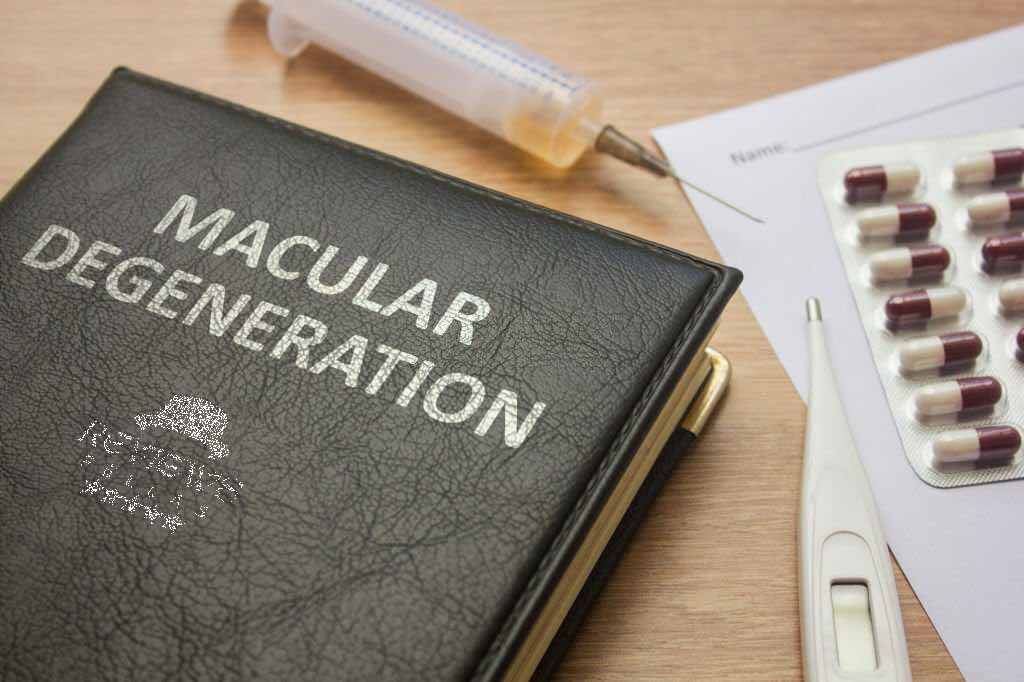This article is reviewed, corrected, and approved by: Dr. Joshua Collins M.D. | MRCP। FRCP
Macular Degeneration, or RAMD, is an eye condition that can lead to loss of central eyesight. Vision impairment is a common problem among people who are 50 years old and above. It can also occur at an early age, such as in children and younger adults (juvenile macular degeneration).
What is Macular Degeneration?
AMD harms the macula, a small region situated at the rear of the eye within the retina. The macula has a significant function in providing clear and focused central vision.
Reading, driving, facial recognition, and each of the details all rely on this capability. Macula plays a crucial role in delivering a clear and focused central vision.
What Are the Early Warning Signs of Macular Degeneration?
Here are some indications that it could be AMD
- Blurred Vision, especially in the Center of Your Vision: When you have macular degeneration, the central part of your vision becomes blurry, making it hard to see fine details like text or faces. Blurred vision can cause severe headaches. Read more about it here: Blurred Vision And Headache - The Symptoms And Causes
- Straight Lines Appearing Wavy or Distorted: If you notice that straight lines, like telephone poles or door frames, look wavy or bent, it could be a sign of macular degeneration affecting how your brain processes visual information.
- Dark or Empty Areas in Your Central Vision: You might not be able to see things directly in front of you if you have dark or empty areas in your central vision.
- Low-light Vision Difficulties: People with macular degeneration often struggle to see clearly in dim lighting or when there's not enough light. Because the disorder impacts the eye's ability to adjust to changing lighting conditions.
- Difficulty Recognizing Faces: Macular degeneration can make it challenging to recognize faces, especially if the person is directly in front of you. This is because the central part of your vision, which is responsible for seeing faces clearly, is affected.
Aids for Macular Degeneration

There are various aids available to help individuals with macular degeneration maintain their independence and quality of life. With the support of these aids, individuals with macular degeneration can enhance their capabilities in recognizing faces, reading, writing, and managing daily tasks.
Some common aids include:
- Magnifiers: Handheld magnifiers, electronic magnifiers, and stand magnifiers can help enlarge printed material, making it easier to read.
- Text-to-Speech Software: Screen reading software, like JAWS or NVDA for computers and voiceover for devices. These devices can convert on-screen text into speech.
- Audio Books: You can listen to audiobooks, which can be an enjoyable way to access books and other written content without relying on visual reading.
- Bold and High-Contrast Materials: Using materials with bold fonts and high-contrast colors can make reading and identifying objects easier to see.
- Voice-Activated Assistants: Smart speakers like Amazon Alexa, Siri, or Google Assistant (Home) can assist with tasks like setting reminders, making calls, and getting information using voice commands.
- Large-Button Phones and Remote Controls: Devices with larger buttons and easy-to-read displays can make communication and entertainment more easily manageable.
- Digital Voice Recorders: These devices allow you to record notes, reminders, or other important information using spoken words.
- Color Identification Apps: Some apps can help identify colors for people with color vision challenges.
- Orientation and Mobility Training: Orientation and mobility experts offer instruction to assist people who have visual impairments in safely moving around their surroundings.
Lastly, these aids can make life easier for the people.
Treatment For Macular Degeneration 2023
Macular degeneration patients in 2023 can benefit from various treatments, some of which are new, while others are based on past methods. Let's check out some effective macular degeneration eye care for you.
Eye Drops For Macular Degeneration
Eye drops work like lubrication that can offer temporary relief for dry eyes, providing a solution for dryness, irritation, and discomfort. Eye drops may also be recommended in combination with other treatments for post-treatment side effects or to promote healing.
- Anti-VEGF Injections: To treat wet AMD, which is characterized by abnormal blood vessel growth in the retina, medications can be directly injected into the eye to prevent its effect. Drugs like ranibizumab (Lucentis), aflibercept (Eylea), and bevacizumab (Avastin) are commonly used for this purpose.
- Laser Therapy: There are some cases of wet AMD that may be treated with laser therapy to seal off leaky blood vessels.
- Vitamins and Supplements: There is evidence that certain vitamins C and E, zinc, and lutein/zeaxanthin, may have a beneficial effect on slowing AMD progression. You can learn about the 5 Best Supplements For Eye Health
- Habit Changes: To reduce the chances of AMD getting worse, it is recommended that you make specific adjustments to your way of life. These adjustments involve eating a healthy diet with plenty of fruits, vegetables, and fish, keeping your weight in a desirable range, protecting your eyes from harmful UV light, and avoiding smoking.
Best Reading Device For Macular Degeneration

E-Readers with Adjustable Text Size and Lighting
Devices like Amazon Kindle and other e-readers offer adjustable font sizes, which can be very helpful for individuals with macular degeneration. They also have built-in lighting that can be adjusted to provide optimal reading conditions.
Tablets with Accessibility Features
Tablets like the Apple iPad and Android tablets often have built-in accessibility features such as text magnification, voiceover, and screen reading. These features can make reading and interacting with digital content easier for those with vision problems.
Handheld Magnifiers
These are portable devices with a magnifying lens that can be placed over printed material to enlarge the text.
Electronic Magnifiers
Electronic magnifiers, also called digital magnifiers or video magnifiers, use a camera to capture text and display it on a screen with adjustable magnification. Some models provide high contrast modes and color adjustments.
Screen Reading Software
Some software can transform text displayed on the screen into spoken words, enabling users to hear the content. There are screen reading programs like JAWS, NVDA, and Voice-over.
Braille Displays
For those who are proficient in Braille, Braille displays can connect to devices and convert digital text into Braille characters that can be read through touch.
Smartphones with Accessibility Features
Smartphones like the iPhone and Android devices have a range of accessibility features, including text-to-speech capabilities and screen magnification.
Sunglasses for Macular Degeneration
Sunglasses can be helpful for individuals with macular degeneration, especially those with sensitivity to light or glare. While they won't directly treat macular degeneration, they can improve comfort and vision in certain situations.
When you go to buy sunglasses, search for sunglasses that provide 100% UV protection and consider those with polarized lenses, as these can help reduce glare. Additionally, wrap-around styles can provide better coverage and protection from different angles of light.
Conclusion
If you experience any of these signs, especially if you're over 50 or have other risk factors, it's essential to speak with an eye specialist called a retinitis or retinal specialist. The timely identification and proper management of visual impairments can significantly contribute to the preservation of both your eyesight and the quality of your life. By doing so, you can improve your chances of maintaining optimal eye health, mitigating potential complications, and ultimately safeguarding your overall well-being.
Summary: 5 Macular Degeneration Early Warning Signs To Stop Vision Loss
Early Warning Signs of Macular Degeneration: Blurred Central Vision, Wavy Lines, Dark Spots in Central Vision, Low-Light Challenges, Face Recognition Difficulty
Macular Degeneration Aids: Magnifiers, Text-to-Speech Software, Audiobooks, Bold, High-Contrast Materials, Voice-Activated Assistants, Large-Button Devices, Digital Voice Recorders, Color Identification Apps, Orientation and Mobility Training
Frequently Asked Question
Q: Can LASIK fix macular degeneration?
A: No, LASIK cannot fix macular degeneration.
Q: Is macular degeneration a disability?
A: Macular degeneration can be considered a disability, especially if it significantly impairs a person's vision.


